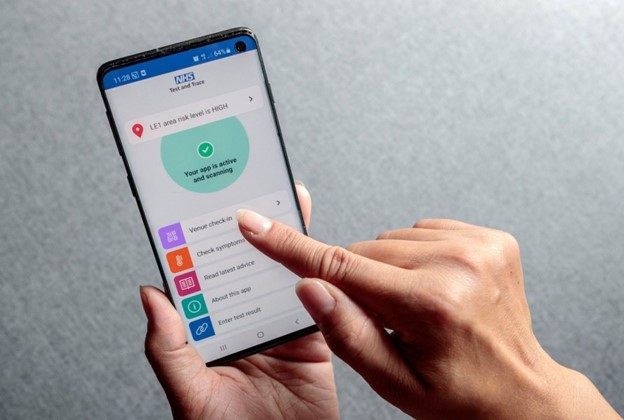
NHS Contact Tracing App Failure: Lessons for Project Managers
When Covid19 went global in February 2020, the best bet for containing the spread was knowing who had met whom, where and when.
25,000 human contact tracers were deployed to hunt down people who showed symptoms and then trace those they’ve contacted. However, human tracers have their limits. The system did not work as effectively as the authorities expected. The figures reveal that a quarter of infected people were off the radar. For a fast-spreading virus such as Covid-19, that tiny window would widen into a deadly backdoor; except something happens.
As always, governments turned to technology for help. The fusion of tech and healthcare have worked wonders in the past two decades. And there was no better time to leverage technology for healthcare, than in a pandemic.
In the weeks that followed, the UK government plied that approach; building an app that would achieve in less time and with reduced risk, what human contact tracers couldn’t. Encouraged by Singapore’s early success in the release of its contact tracing app, TraceTogether, the British government set out to launch its first state sponsored contact tracing app. With the NHSX aiming to accomplish that before the end of March 2020, but that didn’t happen.
After several delays, the NHS Covid-19 app had its first trial run on the Isle of Wight in early May 2020. Authorities announced that the app would be available nationwide in two weeks. This was pushed back till June and then eventually winter. After much debate and PR drama, government officials decided to dump the idea altogether. The move shattered the hopes of many Britons who saw this app as their ticket back to a normal life again.
There are several gremlins behind the failure of this promising app. But I will highlight just three (3) reasons from a project management perspective.
- Technology
By their nature, contact tracing apps have a troubled history. According to the Ada Lovelace Institute, “There is currently insufficient evidence to support the use of digital contact tracing as an effective technology to support the pandemic response.” Secondly, the UK’s intention to boycott Apple and Google’s API was a huge risk, tech-wise. While Apple and Google’s creation requires Bluetooth to run in the background, the UK government decided to circumvent inbuilt restrictions in Android and iOS phone systems. According to tech experts, this was impossible. And the results proved so.
The NHS app only recognised 75% of Android phones and 4% of iPhones. Per contra, the Google/Apple model identifies 90% of mobile phones. However, it couldn’t tell how far apart people were standing from each other.
This challenge wasn’t peculiar to the UK alone. In May, just days after the trial run on the Isle of Wight, Australia’s contact tracing app also failed in iPhones. Case in point, it wasn’t using Google and Apple’s API. Australia would later adopt the Apple and Google model.
Asides from these, there were also worries about the NHS app’s effect on battery life. Since the app primarily requires a functioning Bluetooth connection, some users reported a fast battery drain. Many early adopters from the Isle of Wight also complained about bugs and later uninstalled the app altogether.
- Data Privacy
People are wary of government surveillance. History is replete with instances where governments used seemingly legitimate reasons such as security and health to spy on their citizens. The Edward Snowden saga is a case in point.
The UK government added to this air of suspicion when it insisted on using a centralised architecture for collecting information through the NHS app. Although the narrative sounded clean, the suspicions didn’t fade away. For one, the government snubbed the Apple and Google decentralised protocol for a centralised model that displays anonymised details of who has contacted who, and where.
Even though the NHS app does not collect specific information such as names, email addresses, social security number and locations. People can be re-identified if additional information such as location was loaded onto the app. The centralised system, though more effective, posed a greater risk of breaches.
- Accessibility
The question of accessibility has a lot to do with tech-savviness. In a recent study, the majority of UK citizens over the age of 60 have no access to enabled gadgets.That is, the technology is scarcely available to the age bracket who are most vulnerable to Covid-19.
This is, in part, because most 60-year-old individuals do not use phones compatible with QR code technology. More so, the app requires every location to have QR codes to scan. This doesn’t tally with real-life scenarios because not all locations have code scanners.
The NHS app raised so many hopes. Although there was an unspoken consensus that it wasn’t going to be easy, especially under tight time constraints and the nascent nature of tracing technology; expectations were high nevertheless.
Conclusion
Like project management, product design is reiterative. We must be open to learn and improve our processes. We might tend to fumble around before settling on the right blend of technology. We will battle hard ethical questions around privacy and its impact on users. We will also confront questions around inclusion and access. However, the end goal is to deliver a product or service that works.
Contact tracing technology will continue to improve, however the million dollar question is whether our healthcare infrastructure will be better prepared before another pandemic strikes?






